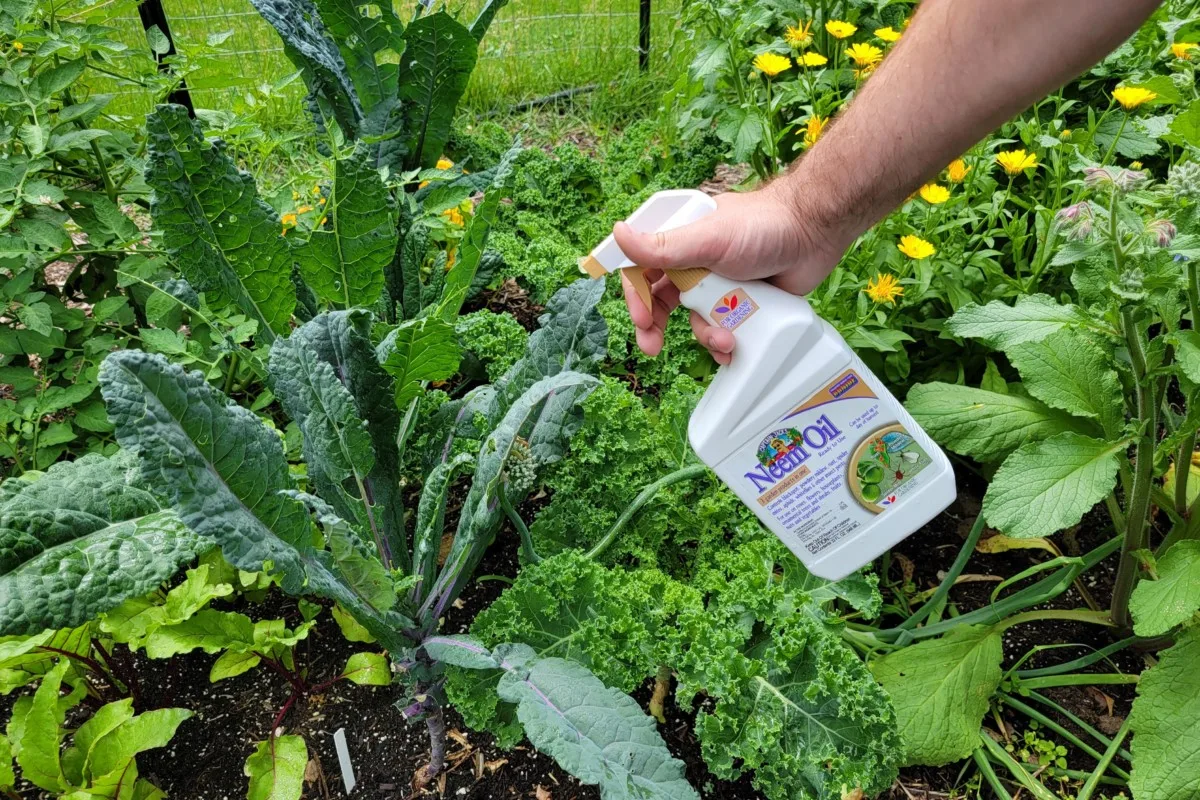
Neem oil should be in every organic gardener’s tool kit. It has a number of uses that make it a good thing always to have on hand.
In this article, we’ll take a look at seven ways to use neem oil to benefit your plants and garden. We’ll also take a look at how to use it without having a negative impact on wildlife or plants, which is always an important consideration in an organic garden.
What is Neem Oil?
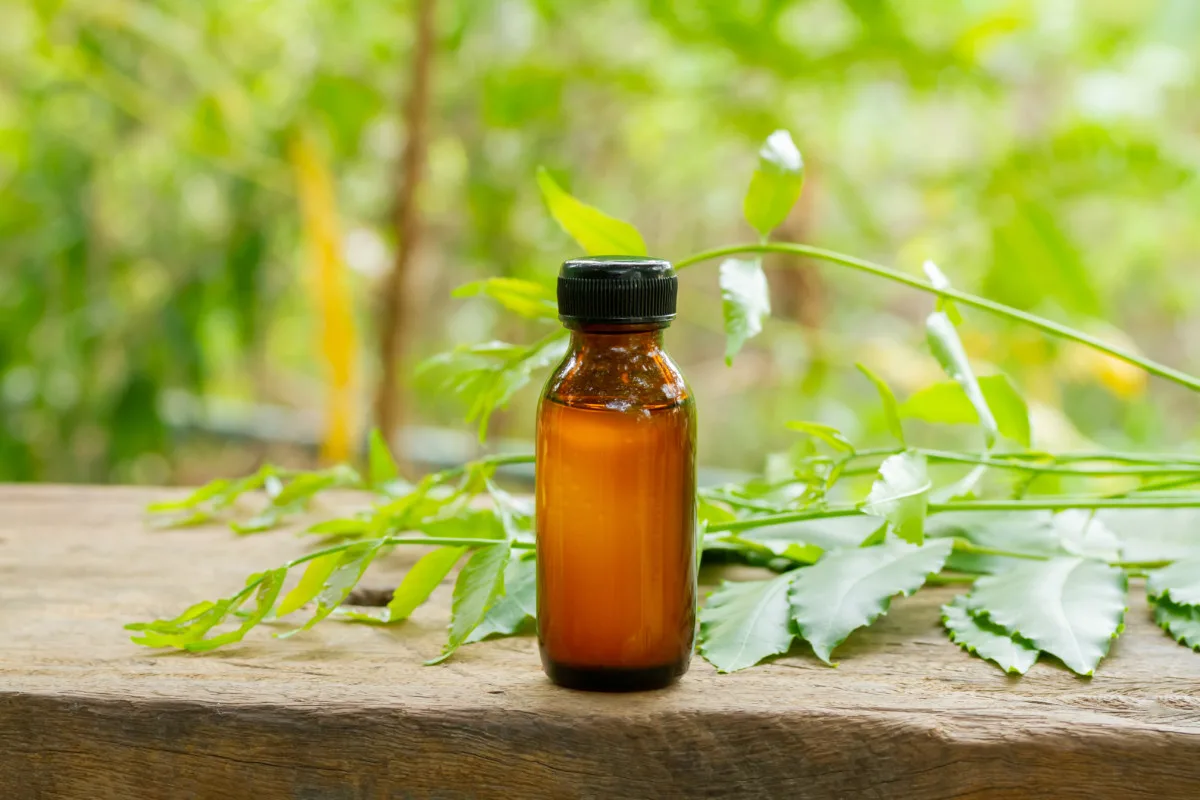
Neem oil is an oil derived from an evergreen tree – Azadirachta indica. This tree is native to the Indian subcontinent and has long been used in the region for a range of purposes.
It’s used as a natural medicine for a range of ailments, hair and skin treatments, and as a pesticide and soil conditioner.
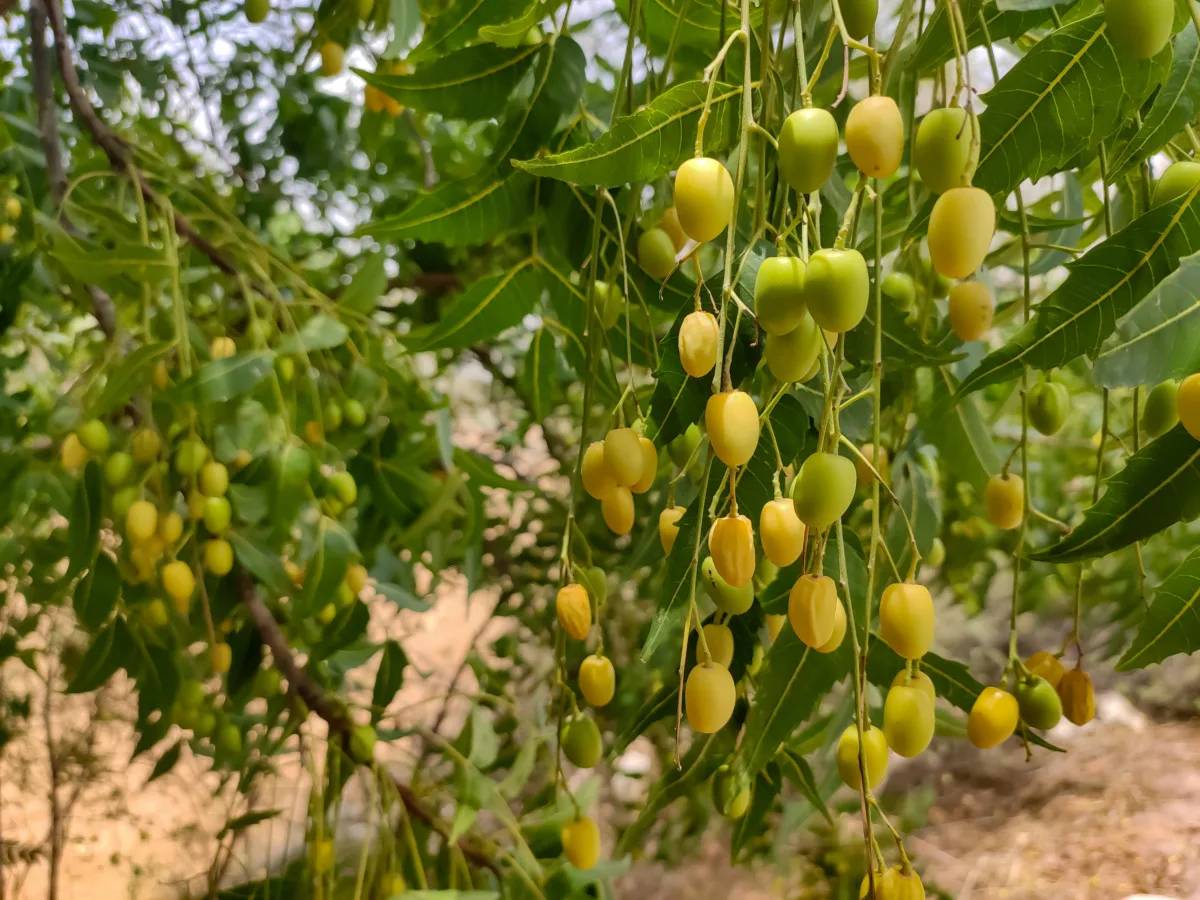
Neem’s ‘active ingredient’ is a compound known as azadirachtin. Almost all parts of the tree contain this substance to a degree, but it is most concentrated in the seeds. Neem oil is extracted from these seeds in much the same way that olive oil is derived from olives.
The pulp left over after the extraction process is traditionally made into ‘neem cake’, and this is now formed into granules that serve similar functions to the oil. Neem cake is another handy tool in the organic gardener’s tool kit.
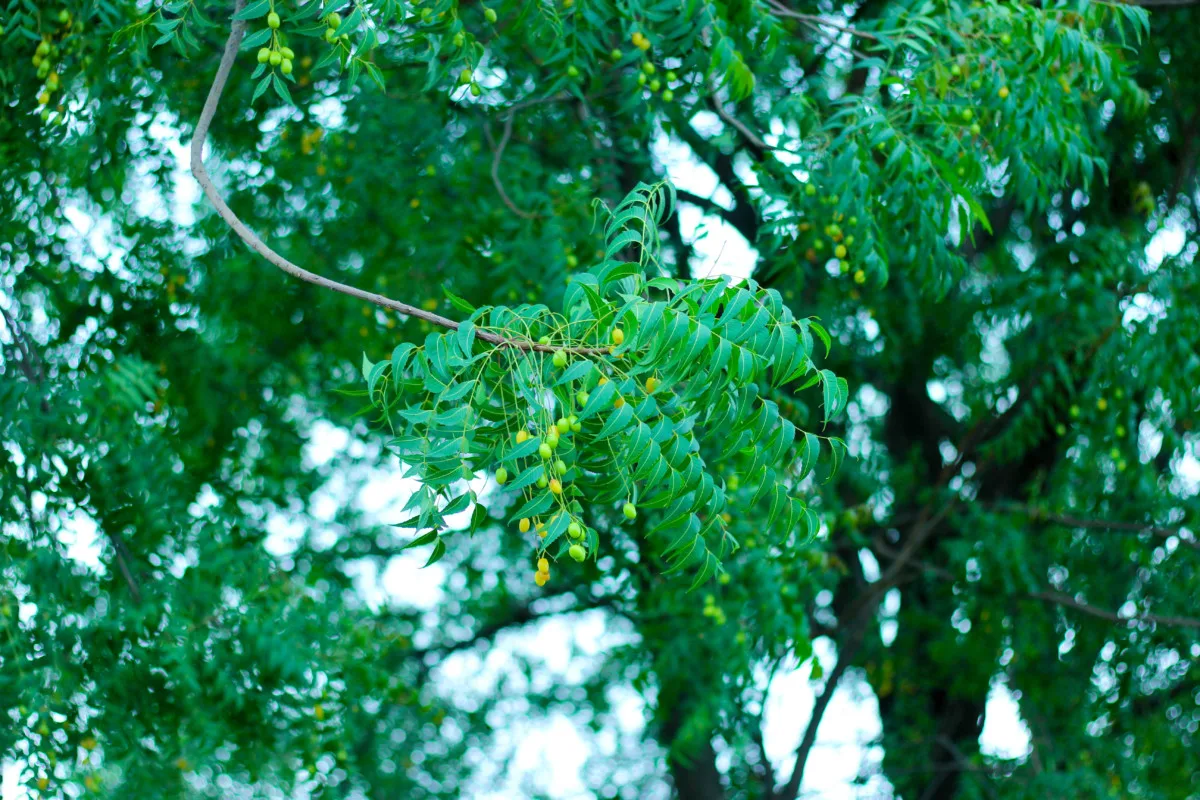
The Benefits of Using Neem Oil
- Neem oil doesn’tt create a ‘death zone’ around plants and areas where it is used. It is largely harmless to people, pets, mammals, birds, earthworms and lots of other wildlife.*
- It is fully biodegradable, and breaks down quickly during rainfall and in sunlight, so will not usually build up to more potentially harmful levels.
- Neem oil is fully organic, and the EPA has found it to have ‘no unreasonable adverse effects’. So while it may not be perfectly harmless, it certainly is a whole lot better than a wide range of synthetic substances used in non-organic gardens.
- It won’t pollute the soil, ground water or nearby streams or bodies of water, and certainly won’t do so long term.
*The extent to which it is non-toxic to mammals, fish etc. is hotly debated. There has been a suggestion that neem is mildly toxic to fish and other aquatic creatures. And some formulations carry a warning on the label that it may affect the reproductive systems of terrestrial vertebrates – ie us. Do your own research and use your best judgment when deciding if neem oil is right for you and your garden.
However, as a powerful insecticide, with strong anti-bacterial and anti-fungal properties, it is also important to understand that neem oil is not entirely harmless.
Let’s look at how to use it safely and effectively to manage problems in your garden. But we’ll also look at why it might not always be the best solution to employ.
Related Reading: 3 Organic Pesticides That Really Work (But Only As A Last Resort)
How To Use Neem Oil in Your Garden
Neem oil can be used in your garden to combat a range of common problems. You can use it:
1. As an Insecticide – To Kill a Range of Insect Pests
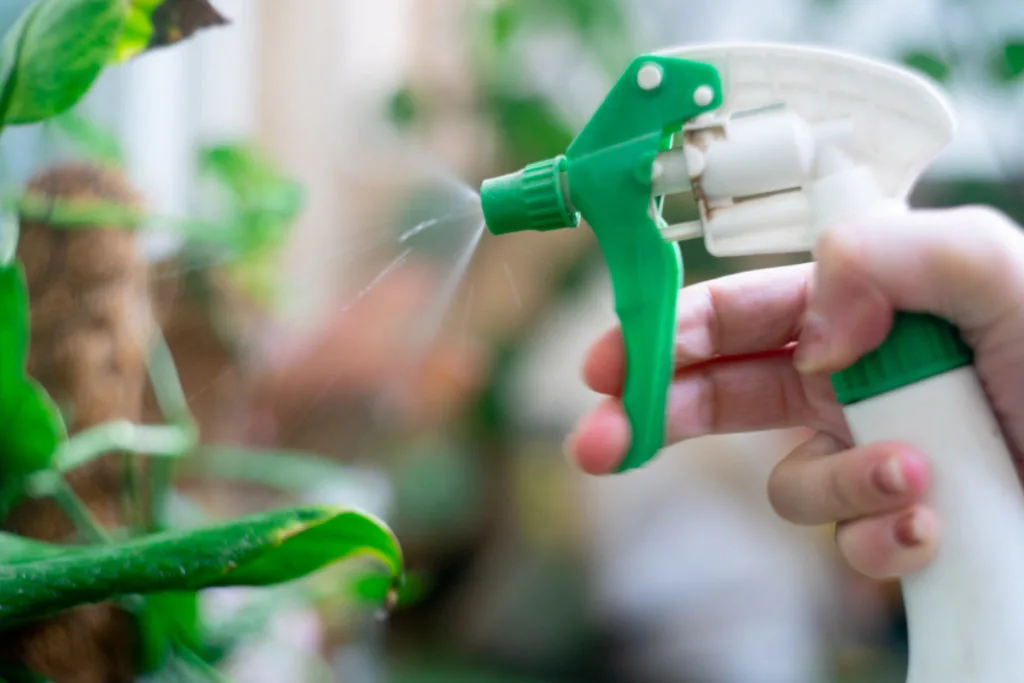
If you are a nature lover, you probably don’t want to know what neem oil actually does to insects. It can:
- Disrupt or inhibit the development of eggs, larval stages or pupae.
- Upset mating and sexual communication.
- Repel both larvae and adult insects.
- Deter females from laying eggs, or sterilize adults of various species.
- Poison larvae and adult insects.
- Deter insects from feeding, or even block their ability to swallow.
- Send development and metamorphosis awry at various stages, and stop chitin (the primary ingredient of arthropods’ exoskeletons) from forming.
Then again, if you’ve got a flea beetle infestation that’s destroying your prize veggies and flowers, this may all come as welcome news.
Neem is such an effective insecticide in part because it affects insects at many different stages in their life cycles. And also because it affects more than 300 different insect species. Each species is affected differently and to varying degrees.
The general consensus is that neem is a far preferable alternative to insecticides like pyrethrum, which kills/harms insects on contact. Unlike pyrethrum, neem does not kill insects on contact. Rather, it has to be ingested in order to have a toxic effect.
This means that a spray containing neem oil can be sprayed onto the foliage of plants to kill or deter a wide range of insects that suck sap or nibble leaves. Aphids, whiteflies, mealybugs, scale, a range of other beetles and bugs are amongst the insect infestations that can be tackled in this way.
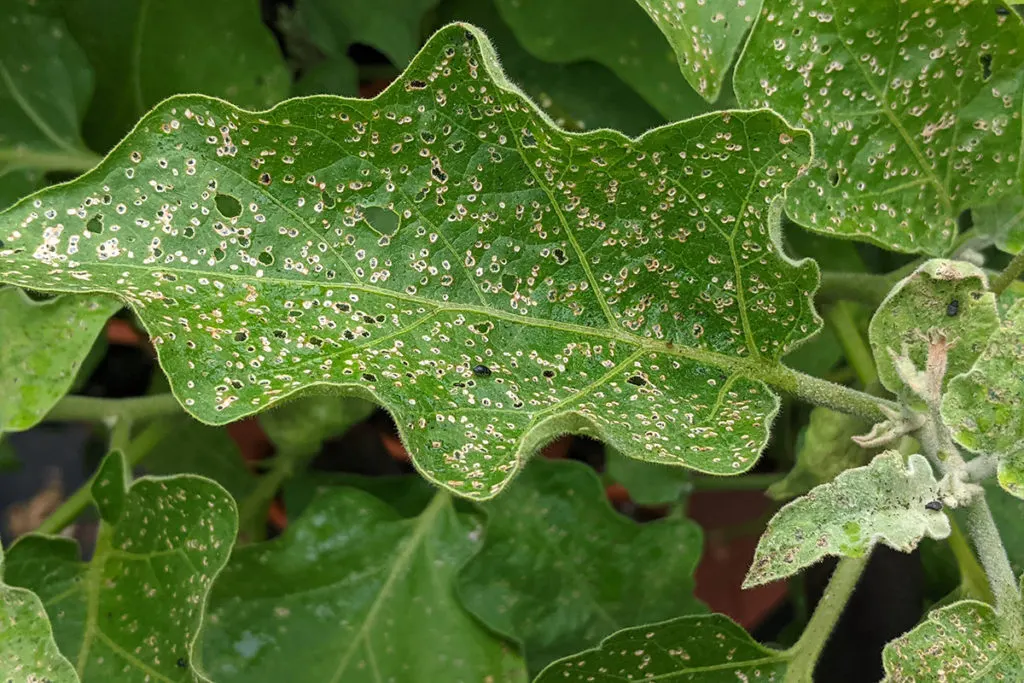
But since beneficial predatory and parasitoid insects will not ingest the plants, but rather eat other insects, the idea is that they will not typically ingest enough neem oil for it to be harmful to them. (Recent research, however, has suggested that hoverfly larvae may be sensitive to neem sprays.)
How To Use Neem As an Insecticide
In order to avoid collateral damage – to bees, butterflies and other beneficial pollinators and non-pest insect species that are affected to some degree or other by neem oil – it is important to spray neem only at dawn or dusk when these insects are not around. And to avoid spraying during springtime, and when blooms and blossoms mean that bees and other pollinators are out in force.
To make a neem oil pesticide spray:
- Take a teaspoon of pure, cold-pressed neem oil.
- Add to around 4 cups of warm water.
- Add ½ tsp of liquid soap (natural and neutral in pH).
- Pour into a spray bottle and use the mixture on your heavily infested plants.
Apply topically where the insects are, rather than spraying more broadly and indiscriminately.
And pay attention to make sure you get the undersides of leaves and right into the stems where pests may be hiding.
Use the spray within half an hour or so of mixing, since its efficacy will reduce over time. For a severe infestation, spray every day for a week or so until the insects are gone.
While this will work well in dry conditions, it will stop working when washed away by rain. So after rain or watering, it will also need to be re-applied.
One interesting advantage of using neem oil rather than other types of pesticides, however, is that insects do not become resistant to it over time. So it can continue to be effective, even after repeated applications.
You can also use the above mixture as a soil drench. The active ingredient of the neem oil, azadirachtin, will enter the plant’s vascular system and will be passed to any insects that suck sap or eat tissue or leaves.
2. Deal With Fungal Infections of Plants
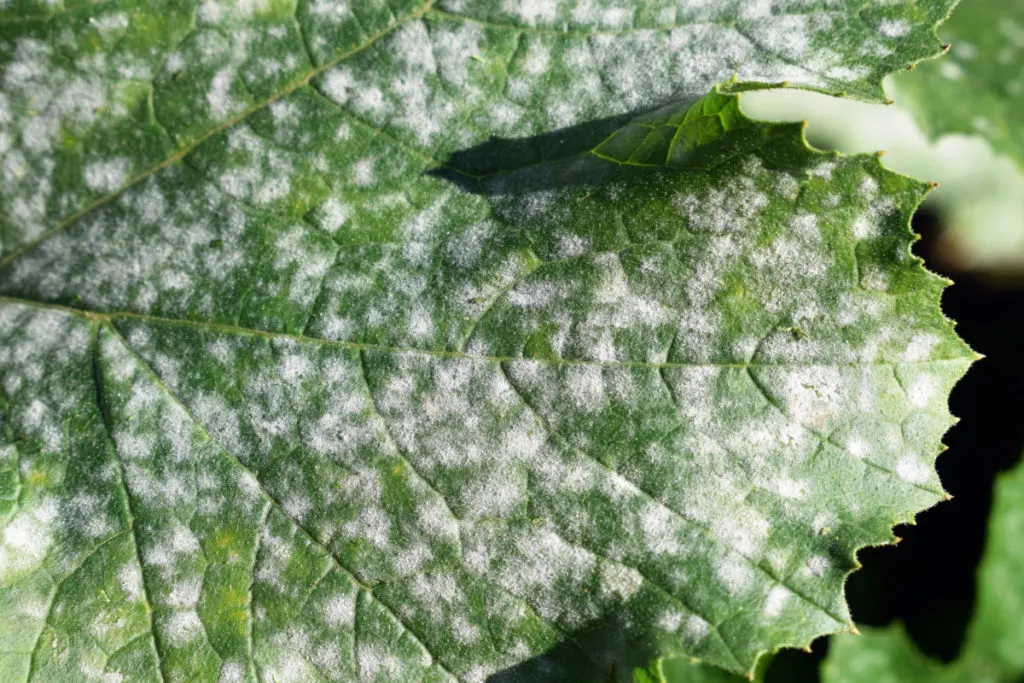
In addition to being effective against a wide range of insect pests, neem oil is also an effective fungicide, helping to control outbreaks of fungal infection such as blights, powdery mildews, verticillium wilt, rusts, scab, black spot etc.
While neem may not allow you to entirely avoid fungal issues, it can be effective in stopping severe fungal infections from spreading to other plants nearby.
How To Use Neem as a Fungicide
Neem oil can be used topically on plants affected with fungal problems. Use this recipe to mix up your own neem-based fungicide spray:
- Add 2 tablespoons of 100% cold pressed neem oil to a gallon of water.
- And 2 tablespoons of olive oil or almond oil.
- Add a teaspoon of rosemary oil.
- And a teaspoon of peppermint oil.
- Stir well, and add the mix to a sprayer.
- Spray the mix on affected plants, or as a preventative on nearby plants to which the disease might spread.
Make sure that you apply the mix on a cool and cloudy day, to avoid leaf burn. And as with sprays used as insecticides, remember that they will need to be reapplied after rain.
3. Deal With a Range of Bacterial Infections
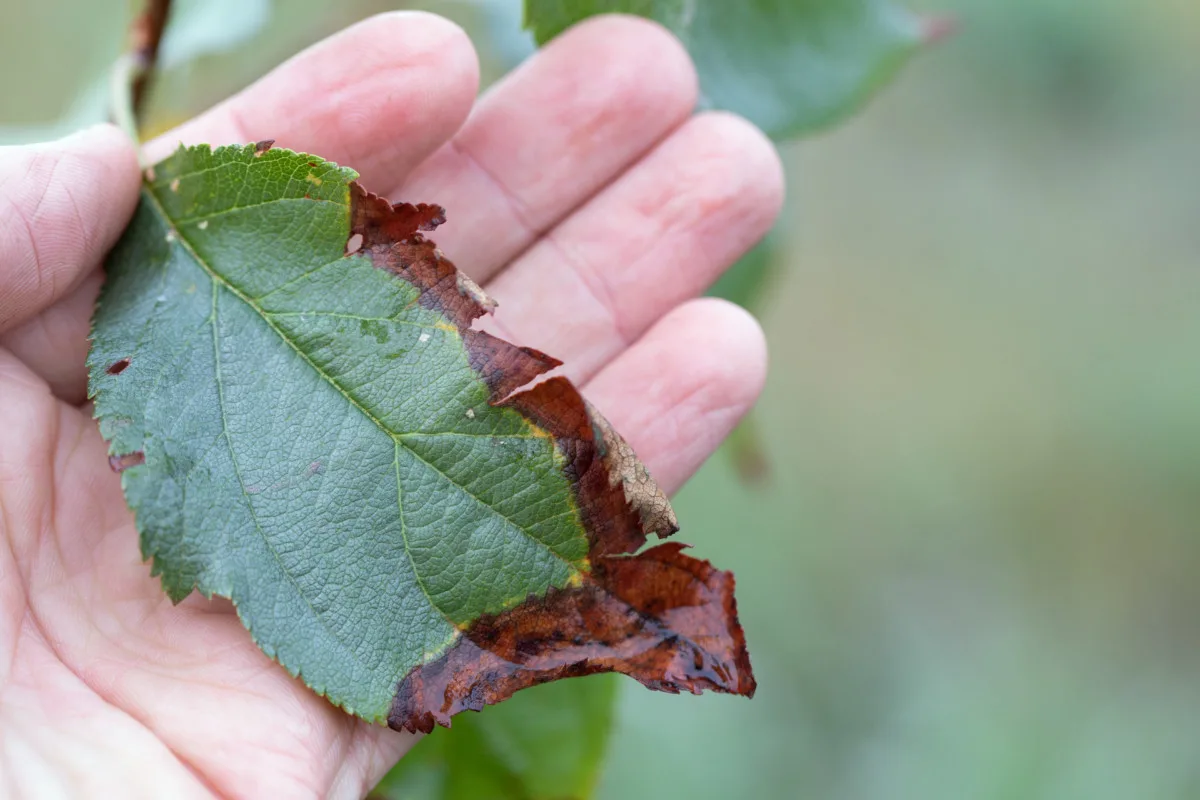
Neem oil can also help to control and prevent the spread of a number of bacterial diseases. For example, neem can be used in the organic treatment of fireblight. This is a bacterial problem that can affect apple trees, other fruit trees, rose bushes etc.
The bacterium responsible for fireblight, which makes leaves wilt and look like they have been scorched by fire, overwinters on the branches and trunks of trees. So neem oil applied as a winter wash to trees may be helpful in dealing with this issue.
However, as we will discuss below, winter washing of fruit trees may not be the best idea. Even when you use organic products like neem oil.
4. Tackle Certain Harmful Soil Nematodes
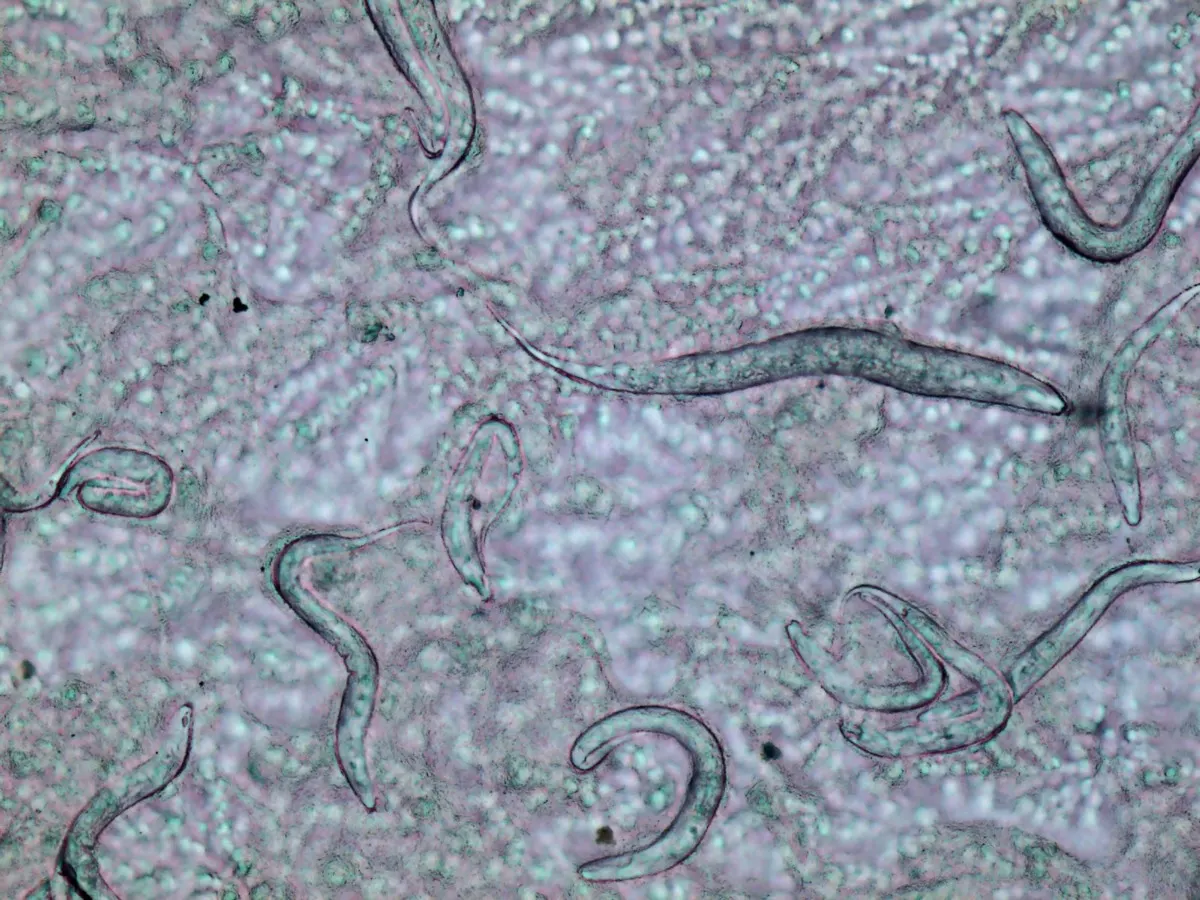
Neem oil is also effective in tackling certain harmful soil nematodes (such as root-knot nematodes) when applied as a drench to the soil.
Nematodes are tiny worm-like organisms that can both help and hinder your gardening efforts. Neem oil can help control destructive nematodes in your garden soil.
5. Reduce the Rate of Denitrification in the Soil
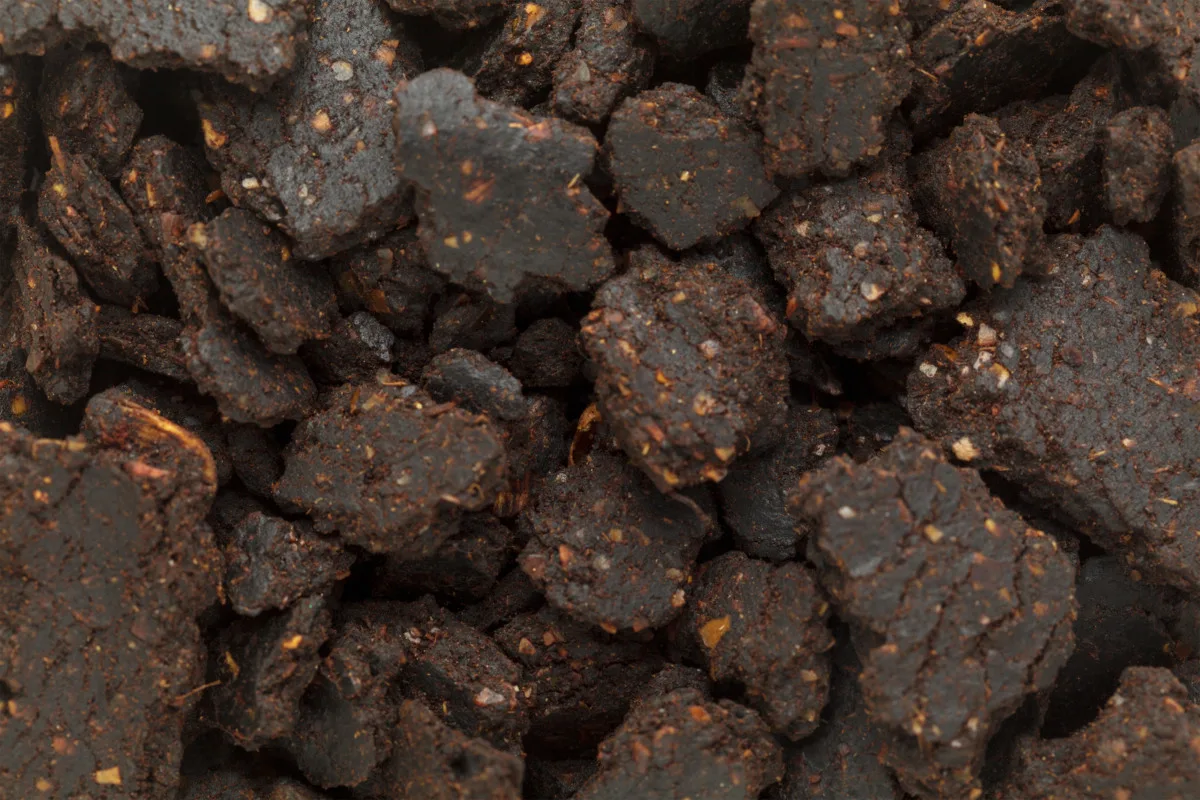
Neem cake, as mentioned earlier, can also serve as a fertilizer and soil amender. It aids the efficacy of other fertilizers by reducing the rate of denitrification (loss of nitrogen) from the soil. It does this by blocking bacteria from releasing nitrogen.
A neem oil drench is also believed to reduce nitrogen release – so there is more nitrogen left in the soil for the uptake of the plants grown nearby.
6. Boost the Number of Micro-organisms in the Soil
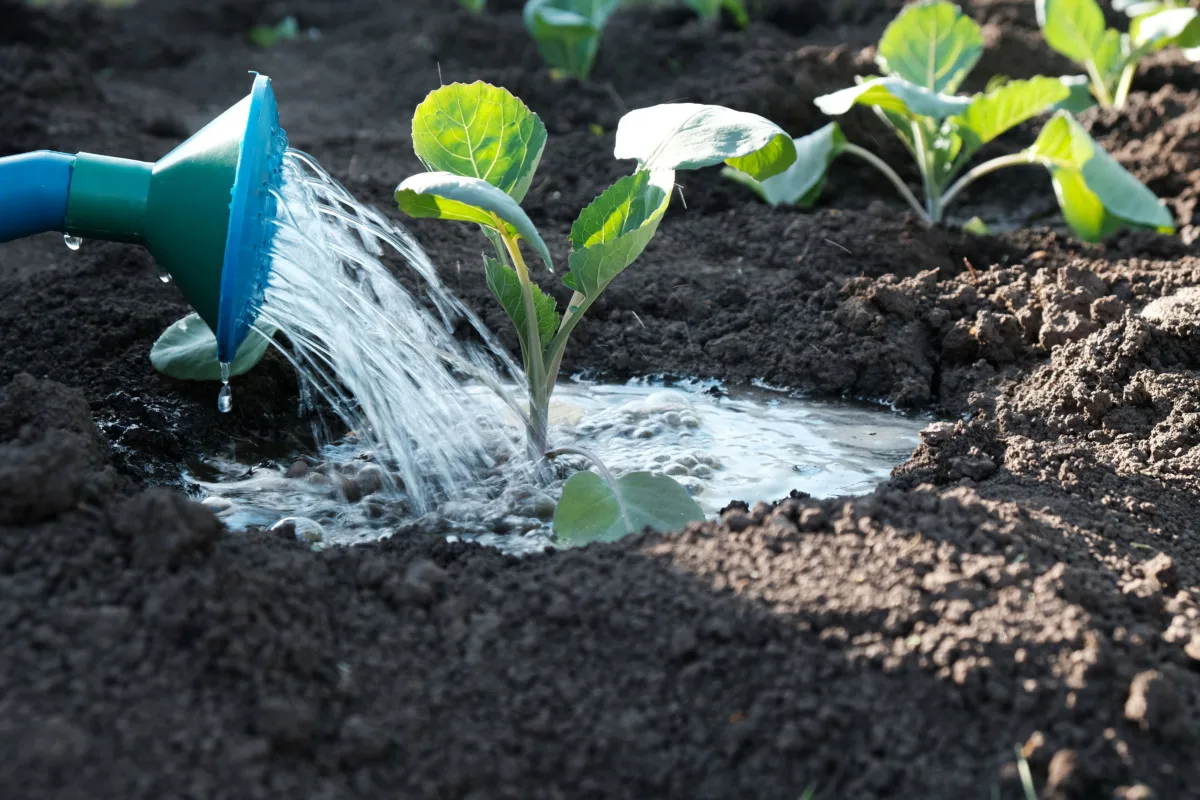
Recent research has also suggested that neem oil drenches added to the soil can also increase the number of organisms in the soil, and in the rhizosphere.
This can be a great thing in an organic garden where we want soil that is teeming with life in order to have a garden that works as effectively as possible.
7. Increase the Average Weight of Earthworms in the Soil
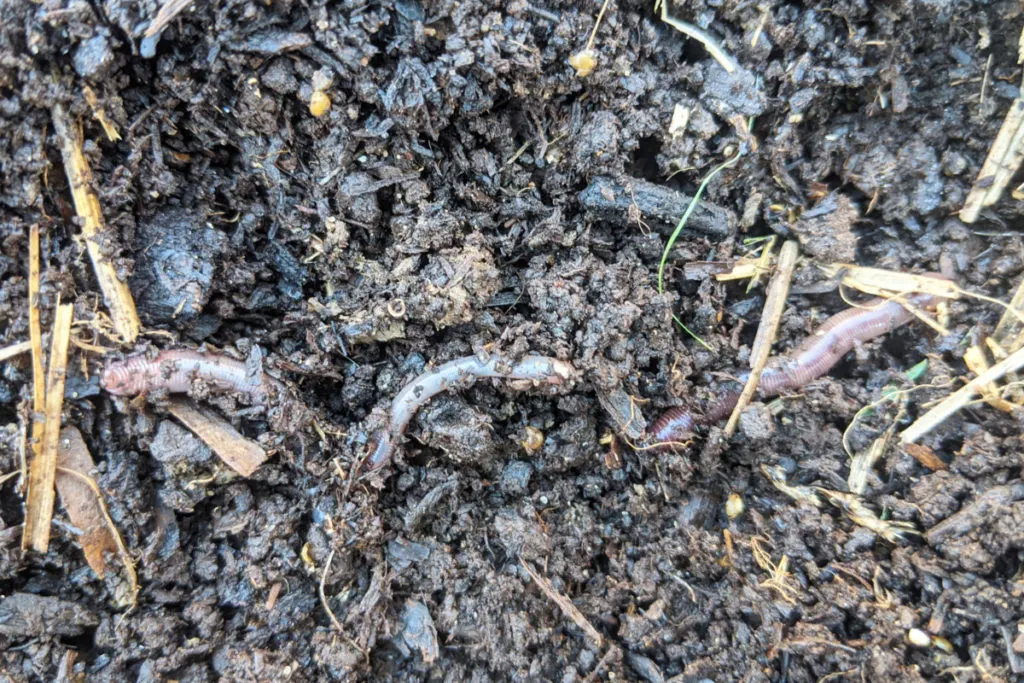
Field trials have also found that the application of neem can also be good for earthworms. It can increase the average weight of earthworms present in a given area.
This is great news for organic gardeners because earthworms are essential soil engineers that protect and preserve the soil in a range of different ways.
Why Neem Oil is Not Always The Best Solution
It is important to understand, however, that just because something is organic and biodegradable, that doesn’t mean that it’s the best solution to a problem. Sometimes, the very things that make neem oil so useful in your garden can also cause issues.
In this article, we’ve explored how you can use neem oil safely and effectively in your garden but it is important to understand that it is not a panacea.
Taking a more holistic view, and working towards a healthy and balanced garden ecosystem is always far better than tackling problems as they pop up.
Alternative Solutions for Insect Pests
We should make sure we have done all we can to attract pest-eating wildlife species to our gardens. We should not spray at the first sign of a pest but should take a more relaxed approach and wait to see if nature can take care of it.
You need a few pests, remember, to attract the things that eat them, and to stop their numbers from getting out of control.
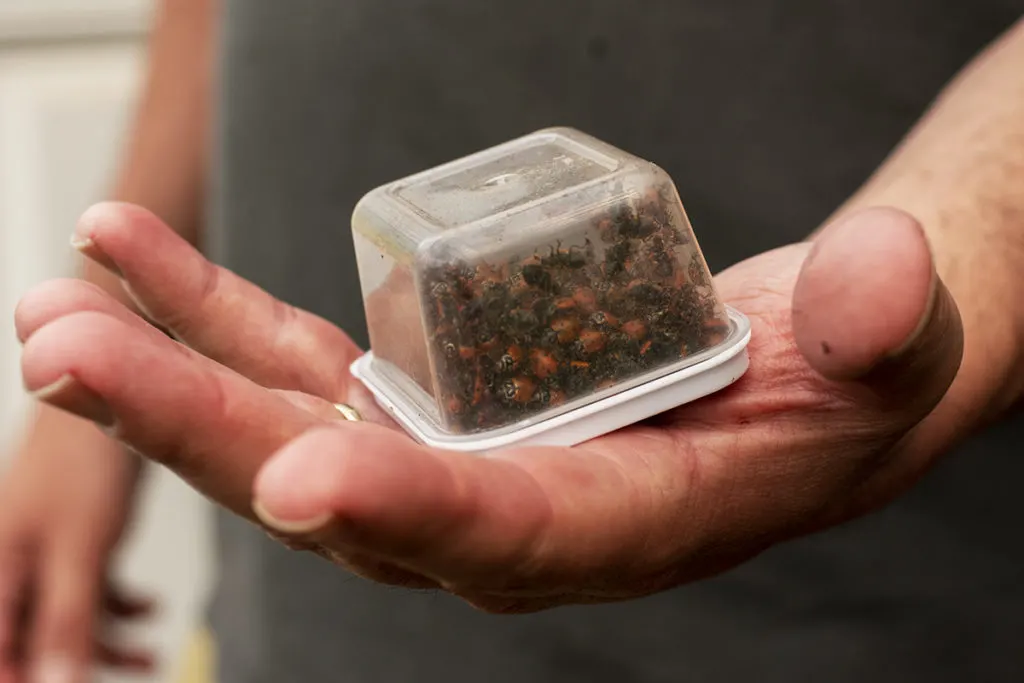
Related Reading: How To Release Ladybugs Into Your Garden (& Why You Should)
You can also use physical barriers such as netting and row covering to keep insect pests off your crops where they become a particular problem.
Alternative Solutions for Plant Diseases
When it comes to fungal and bacterial diseases – prevention is better than cure.
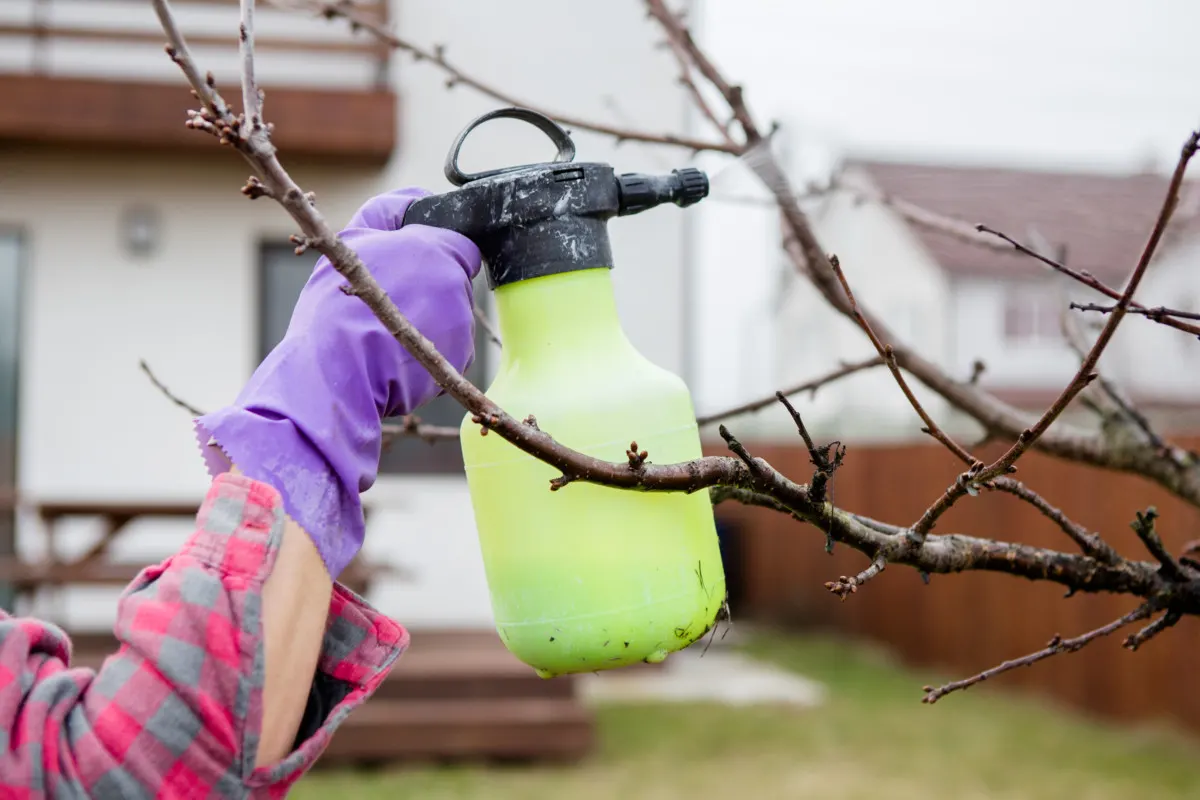
Winter washing of fruit trees can be an effective way to deal with a range of problems. But as with using insecticides, there can be collateral damage. Winter washing will not only target the pest species. It can also remove/ kill beneficial wildlife. In general, good long-term management of your fruit tree or trees is better than extreme solutions.
Make sure you:
- Practice good hygiene to avoid spreading diseases to trees and other plants.
- Prune effectively for good airflow and circulation. Make sure you prune at the right time and in the right way for the trees or other plants you are growing.
- Water effectively, and sufficiently – but not too much.
Maintain your garden well using good organic gardening techniques. When you do so, extreme management solutions like winter washing fruit trees are largely unnecessary.
Alternative Solutions for Improving Soil
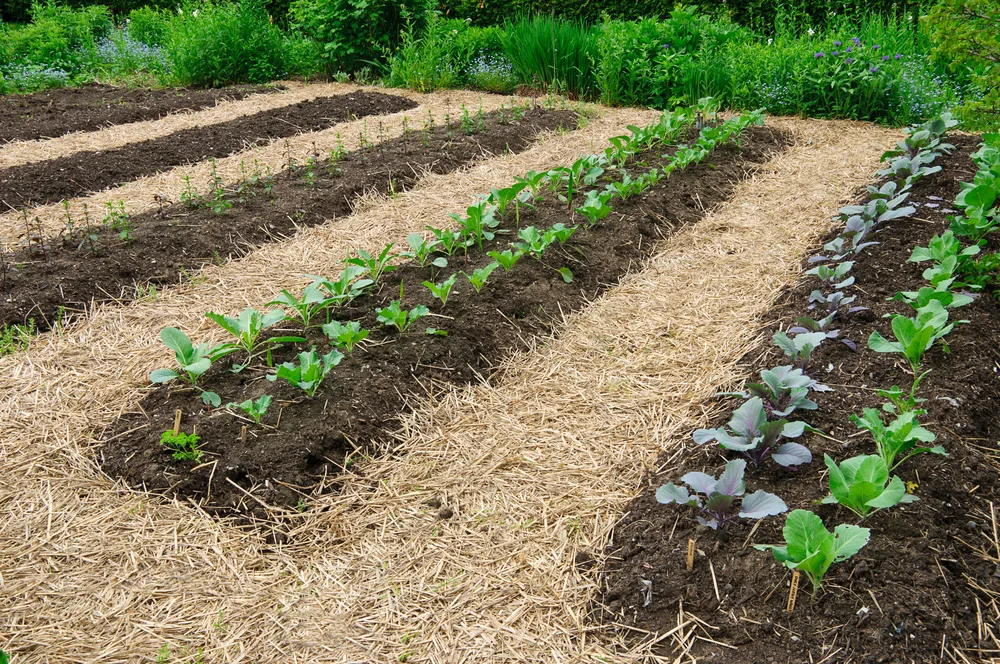
Neem oil, as mentioned above, has been shown to be beneficial in the soil in a range of different ways. It can keep harmful nematodes in check, reduce nitrogen losses, boost microbial life, and increase earthworm activity.
But the complex ways in which neem oil interacts with soil (and insects and other forms of life) means that it’s difficult to ascertain exactly what happens when we use it extensively. Scientists have not yet found out all we need to know about how it interacts with and affects the soil ecosystem.
So while we may occasionally wish to use neem oil to deal with specific problems – we shouldn’t go dousing everything with it. Rather, we should use a range of organic, no-dig gardening techniques to improve and maintain the soil in our gardens. When we do, the whole system will function as it should, and there should be little need to intervene.
What to Read Next:
How to Utilize Trap Crops To Save Your Garden From Pests
How to Get Rid of Stink Bugs & Ladybugs in Your Home
25 Brilliant Uses For Castile Soap

Get the famous Rural Sprout newsletter delivered to your inbox.
Including Sunday musings from our editor, Tracey, as well as “What’s Up Wednesday” our roundup of what’s in season and new article updates and alerts.

